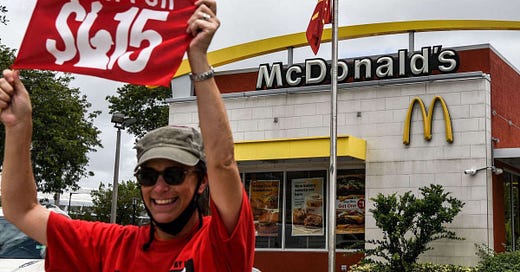It's Time Employers Showed Workers the Money
For the first time in decades, it's a worker's market
There is an unspoken agreement between Williams Sonoma and its store-level employees. In exchange for wages well below the poverty line, workers get discounts on the company’s upscale kitchen supplies. My wife’s employment there a few years ago is a case study on wage inequality.
Shortly after we relocated to North Carolina…
Keep reading with a 7-day free trial
Subscribe to The Journeyman. to keep reading this post and get 7 days of free access to the full post archives.




